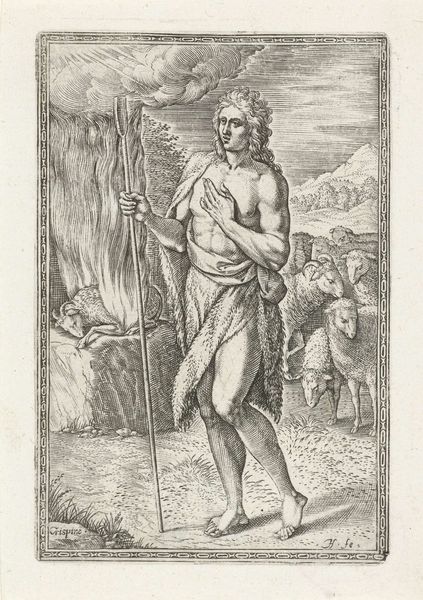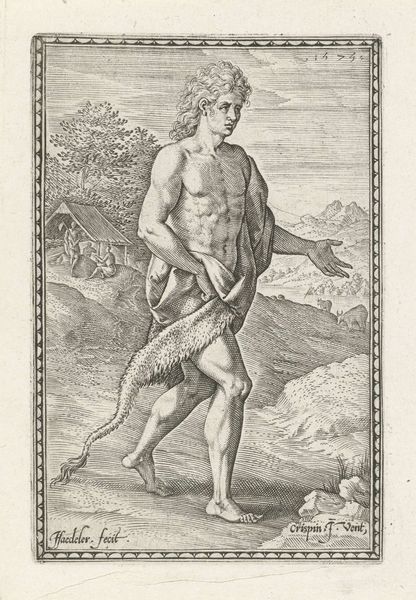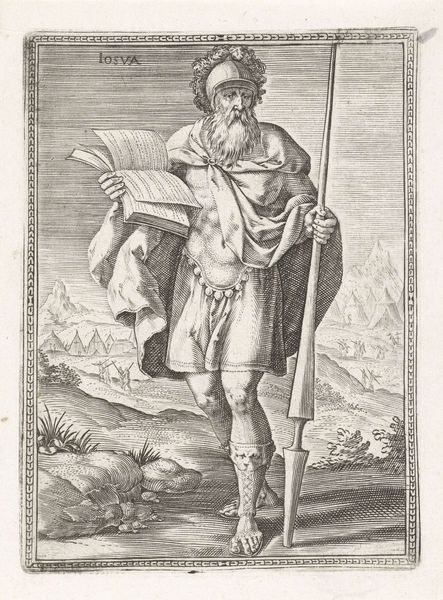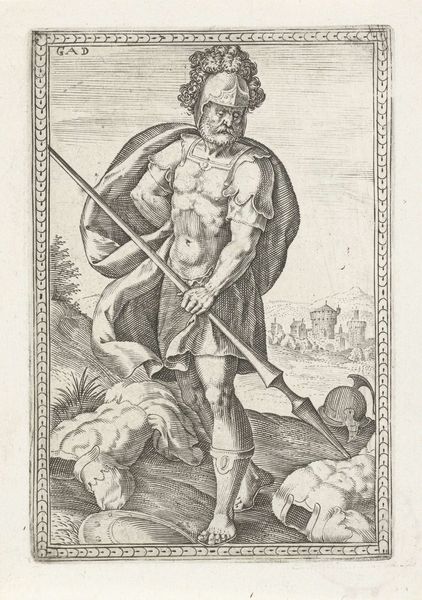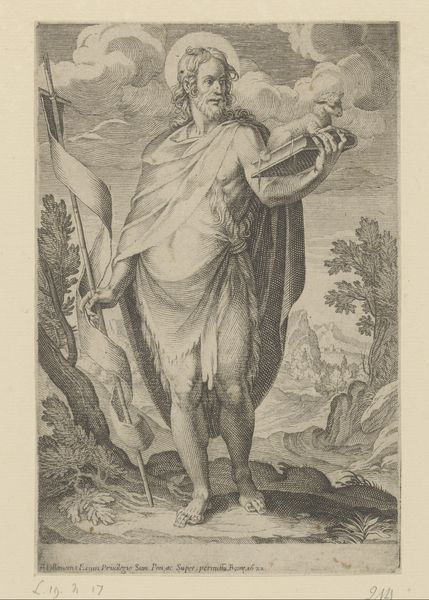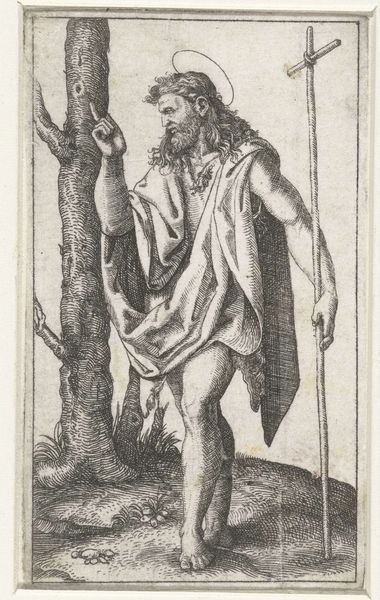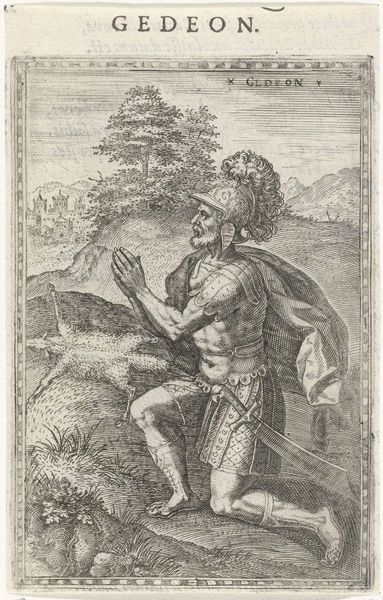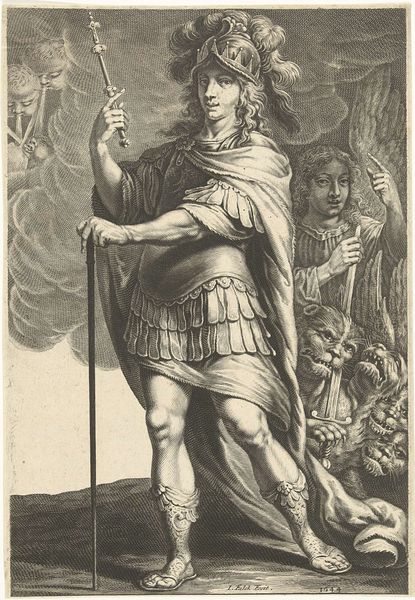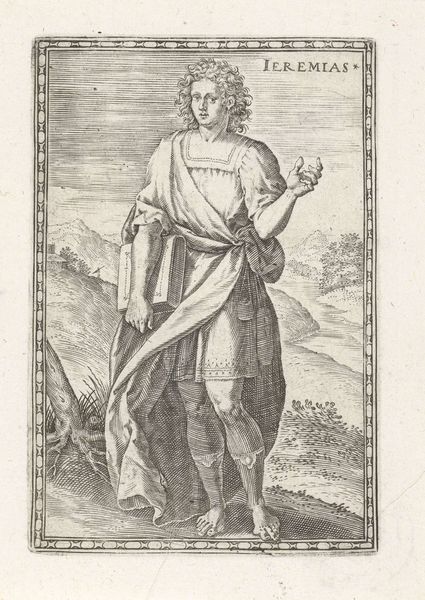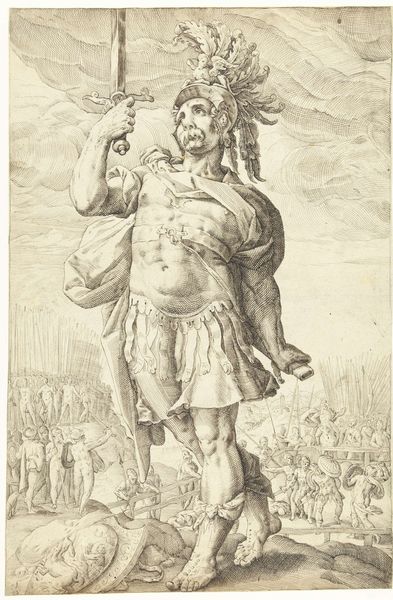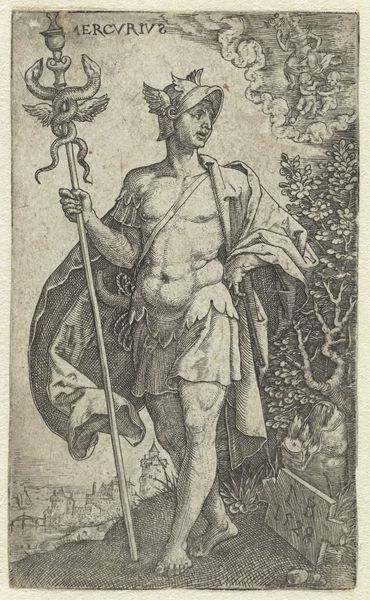
drawing, print, etching, engraving
#
drawing
#
medieval
#
narrative-art
# print
#
etching
#
landscape
#
figuration
#
11_renaissance
#
history-painting
#
academic-art
#
engraving
Dimensions: height 120 mm, width 76 mm
Copyright: Rijks Museum: Open Domain
This print of Abel was made by Johann Sadeler the First, around the late 16th century. It is an engraving, a process of cutting lines into a metal plate, inking it, and pressing it onto paper. Look closely, and you'll see how the varying thickness and density of the engraved lines create depth and shadow, defining Abel's muscular form, the texture of his sheepskin cloak, and the wool of his flock. The image is a testament to the engraver's skill, with each mark carefully considered to build up the overall composition. Engraving like this was crucial in disseminating images and ideas in the early modern period. It allowed for the mass production of artworks, making them accessible to a wider audience. But it also required a division of labor: the artist created the design, but skilled artisans were needed to translate that into a print. This print of Abel, therefore, is a product of both artistic creativity and collaborative craftsmanship, reflecting the complex social and economic systems of its time.
Comments
No comments
Be the first to comment and join the conversation on the ultimate creative platform.
